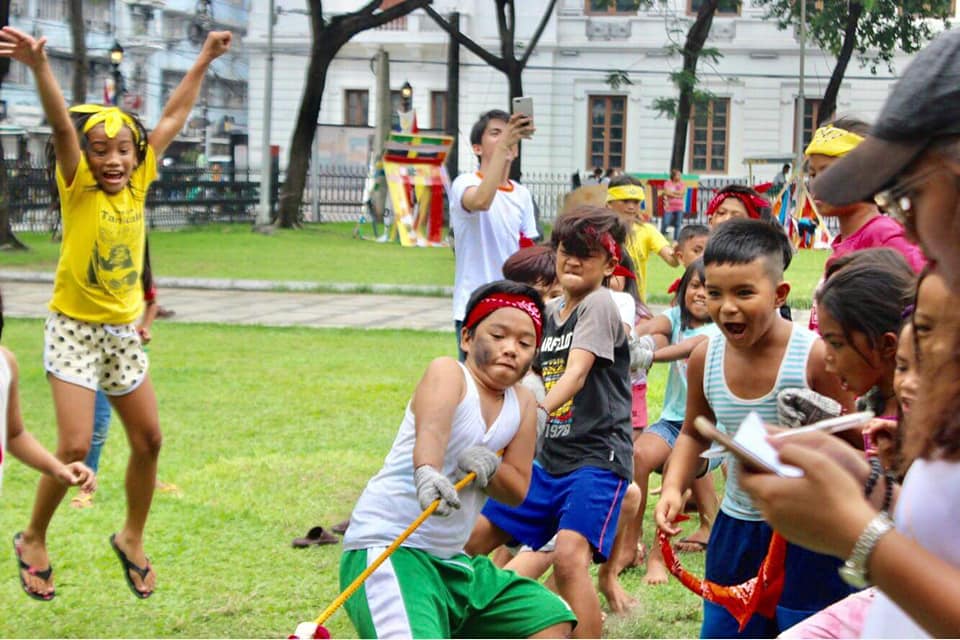September used to be peak season for Museo Pambata. It was around this time, and at every hour, that 600 children on average would stampede through the museum doors, touring around and exploring the museum’s interactive themed exhibits, from simulated ecosystems to miniature historical landscapes. But as with everything last year, museum activities came to a halt. Though cultural spaces in general reopened last March with limited capacity and for a short period, Museo Pambata reasonably remained shuttered. As the museum is geared toward children, the pandemic had Museo lose its primary source of income. Even if kids were allowed during this time, Museo had long championed a tactile approach to fun and education: to have sanitized their hands-on exhibits after every tour and maintain social distancing in spaces designed for play and socializing would have been unsustainable.
It’s that same championing, however, in their continuing campaign for children’s rights and welfare, too, that taking on a new perspective comes as no surprise for the beloved Museo Pambata. As Museo today continues to partner with fellow museums and cultural organizations to pool funds for their upkeep and future projects — with Cartellino’s First Edition 2021, at present — it continues to reconsider its forms of engagement with children during this unprecedentedly challenging period.
Maricel Montero, the executive director of Museo Pambata Foundation, Inc., is optimistic that the pandemic could be ground zero for innovating its museum programs. “Kung ang katawan ang museum, ‘yung programs ang bumubuhay sa museum,” she explained. Meanwhile, the staff and members have taken advantage of the vacant days to carry out necessary renovations that have been put off before. Part of this remodeling was coming up with more outdoor spaces to allay the health risks the pandemic posed. The first one of these new activity grounds is the Bahay-Pukyutan, unveiled last July.
Before the pandemic, apart from housing educational exhibits, Museo Pambata introduced children to worlds unknown to them before, nurturing their curious minds and broadening their horizons at an early age. Modeled after the bees’ honeycomb, Bahay-Pukyutan makes for both a welcome addition and novel play experience. More than for leisure, the Bahay-Pukyutan is envisioned to be an open living classroom for visitors — children and adults alike — to see one’s connection to nature. Alongside this are an apiary and herb garden, which children could hopefully help tend once opened to the public.
Pushing children to learn their relations to themselves, other people, and the environment is part and parcel of the museum’s mission. Critical to that mission is helping children realize that they have choices beyond what their living conditions present. That there exists a world where they can achieve their dreams, and it is possible to refashion the world anew; what better medium is there to foster that than through storybooks?
As such, and apart from being the pioneer of children’s museums in the country, Montero shared that Museo Pambata also boasts itself as the center of children’s storytelling. They used to religiously host storytelling every week, captivating children with stories about experiences both fictive and real. The mobile library program, in particular, was the museum’s endeavor to have these stories reach children beyond its physical halls. Back when community immersions held no threat, both health- and security-wise, museum staff and volunteers would visit underserved communities aboard their mobile library that abounds with over 3,000 books and educational materials. Though itinerant, the mobile library would provide starter kits to the communities it visited to help set up reading corners. Storytelling workshops are also arranged to train families in reading and sharing stories.
More, Museo Pambata acquaints children with different cultures. By partnering with foreign embassies, Filipino children get to meet fellow kids from other countries. Playing with them and learning about their traditions and lifestyles makes for a delightful sight, Montero relates, as the kids open up to each other despite differences and with ease, not at all quick to hold prejudices. Such encounters, however, can only happen in spaces conducive to it. That is why Museo Pambata had also campaigned for the end of conflicts and building peace (Wars, for one, are no ground for children to live in and grow up in.) Back in 2008, when Mindanao was fraught with armed conflict, the museum participated in summits while attending to traumatized children and families.
The unveiling of Bahay-Pukyutan and its ongoing initiative toward relief aid is just few of Museo Pambata’s current projects, all happening — literally — behind computer screens and their closed doors. So now that more children are active online and learning through digital platforms, Museo Pambata aims to stay abreast with the large traffic of the worldwide web. “We have to be more dynamic and active online because I think the digital world is here to stay. Sana makahanap kami ng perfect platform … to create engagement with children online,” Montero said.
So far, they have created and released new educational cartoon shows on their online pages, such as Miming and Friends. They are also creating visual materials to educate children about Filipino identity and nationalism.
Despite different setbacks, Museo Pambata, which is marking its 26th year, assumes a child’s curiosity and fearlessness in reinventing itself. While they have so much to look forward to once they can open their space again, Montero cannot help but be nostalgic about how the museum used to be not more than just two years ago. With sustained efforts from the museum itself and cultural organizations alike, Museo Pambata, hopefully, could welcome children once again — hopefully when it’s not too late.
Museo Pambata is one of the two beneficiaries for this year's First Edition. To learn more about Museo Pambata, its donation channels and volunteer programs, start here.
Editor's note: a previous version of this article mistakenly reported Museo Pambata's involvement with Afghan children relief.
Sam del Castillo is a contributor to Cartellino.

